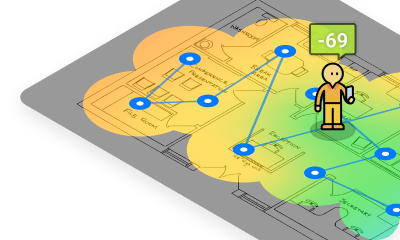Wi-Fi Site Surveys, Analysis, Troubleshooting runs on a MacBook (macOS 11+) or any laptop (Windows 7/8/10/11) with a standard 802.11be/ax/ac/n/g/a/b wireless network adapter. Read more about the 802.11be support here.
Top 10 Ways to Boost Your Wi-Fi Signal
Learn 10 effective ways to boost your Wi-Fi network and instantly improve its performance and reach.
Would you like your Teams calls to always be crystal clear and your downloads blazingly fast? Then you need to learn how to boost Wi-Fi signals, and the 10 methods described below are here to help you do just that. So, grab yourself a cup of your favorite beverage — you're about to become a Wi-Fi optimization pro.
Reliable and fast internet has become a cornerstone of modern life, facilitating work, education, and entertainment. When your Wi-Fi struggles to keep up, it can disrupt daily activities and cause unnecessary frustration. Thankfully, there are proven methods to address these issues and strengthen your wireless connection. This article will outline the top 10 ways to boost your Wi-Fi signal and achieve smoother, more consistent connectivity.
1. Check Your Wired Internet Connection
Start by testing your internet speed over a wired connection. Plug your device into the router using an Ethernet cable and use tools like Speedtest to check download and upload speeds. If speeds are below what your ISP promises, contact their support or consider upgrading your plan or modem.
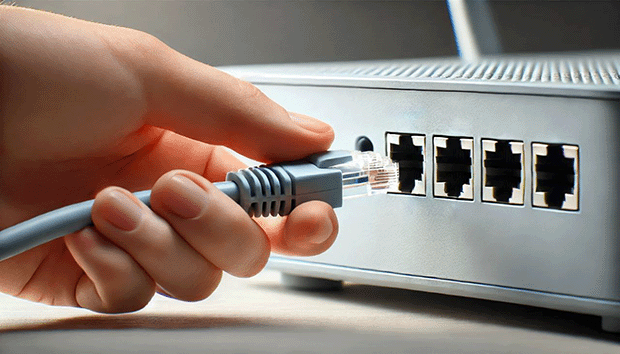
If the wired connection is fine but Wi-Fi is slow, the issue is likely with your wireless setup.
2. Optimize Your Router’s Placement
The placement of your router significantly affects Wi-Fi performance and coverage throughout your space. To ensure optimal signal strength, position your router:
- Centrally within the area you want to cover.
- At an elevated spot, like a shelf or wall mount.
- Away from barriers like thick walls, metal objects, and electronic devices.
- Outside enclosed spaces, like cabinets, which can block signals.
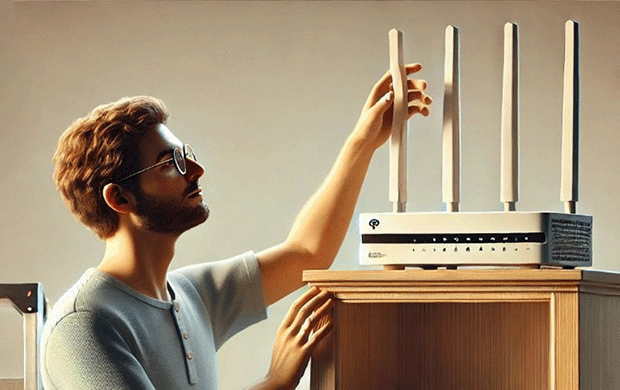
NetSpot can guide you in determining the best location for your router using its powerful tools.
In Survey mode, you can create Wi-Fi heatmaps that reveal weak signal areas, providing a clear visual representation of where coverage needs improvement. This eliminates guesswork and shows exactly where to focus.
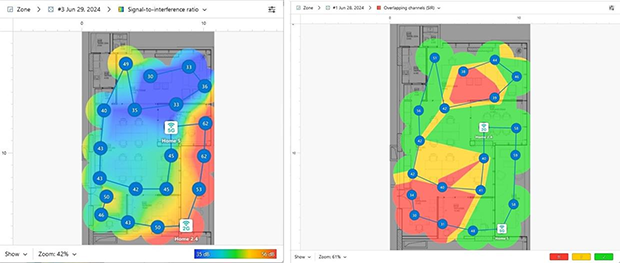
For even greater precision, the Planning mode allows you to virtually test different router placements and predict signal behavior based on room layout and obstacles. This helps you find the ideal position without unnecessary trial and error, ensuring robust connectivity across your home or office.
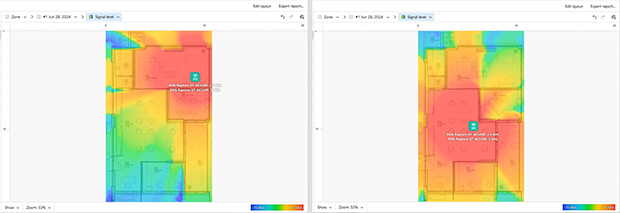
With NetSpot, optimizing your router’s placement becomes not just easier but highly effective, making it a must-have tool for achieving top-tier Wi-Fi performance.
3. Update Your Router’s Firmware
Manufacturers release firmware updates to boost router performance, tighten security, and add new features. Keeping firmware current ensures a safer and more efficient Wi-Fi network. To update, access your router’s admin interface and check for available updates. Some newer models even support automatic updates.

For older routers, manual updates might demand some technical skills: you’ll need to download the firmware file from the manufacturer’s site, then carefully upload it through the router’s interface. Follow instructions closely, as a botched update can disable your router. If your device no longer receives updates, consider upgrading to a modern router with Wi-Fi 6 or Wi-Fi 6E.
These newer standards deliver higher speeds, better multi-device handling, and advanced features like MU-MIMO and OFDMA, ensuring a more reliable network.
4. Optimize Wi-Fi Channels
Channel congestion from neighboring networks can significantly degrade your Wi-Fi performance. NetSpot’s Inspector mode helps with the identification and resolution of channel congestion issues.
By scanning nearby networks, Inspector mode provides a detailed view of each network’s signal strength and channel usage. This allows you to pinpoint overcrowded channels and make informed decisions to optimize your router's settings for better performance.
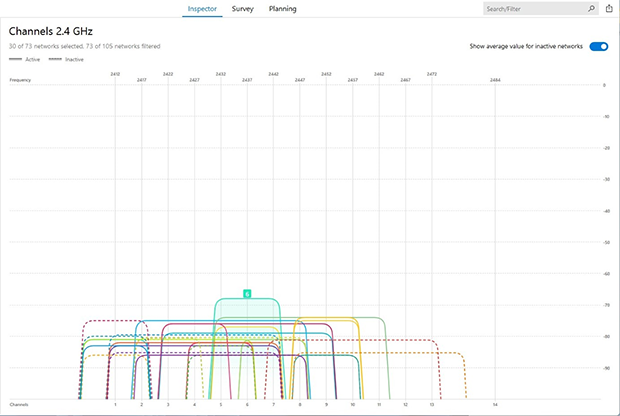
Armed with this information, you can switch your router to a less congested channel for improved performance. In the 2.4 GHz band, choosing channels 1, 6, or 11 is typically best because they don’t overlap with each other. Meanwhile, modern routers featuring dual- or tri-band capabilities can tap into the 5 GHz or 6 GHz frequencies, which usually have fewer competing devices — resulting in faster speeds and reduced interference.
5. Secure Your Network
An open Wi-Fi network not only allows unauthorized users to take up bandwidth, slowing down your connection, but also puts your network at risk of security vulnerabilities. It's essential to use a robust password that includes a mix of uppercase and lowercase letters, special characters, and numbers.
Additionally, enabling WPA3 encryption — the latest and most secure Wi-Fi encryption standard — adds a robust layer of protection against unauthorized access.

Regularly monitoring connected devices through your router’s admin interface ensures that only authorized users are accessing your network. If your router supports device management features, you can set up access control lists (ACLs) or enable device-specific restrictions for added security.
For older routers that don’t support WPA3, upgrading to a modern router with enhanced security features is recommended for better protection and performance.
6. Upgrade Your Router’s Antennas
If your router has external antennas, upgrading to high-gain or directional antennas can significantly enhance signal strength and extend coverage in areas with poor reception.
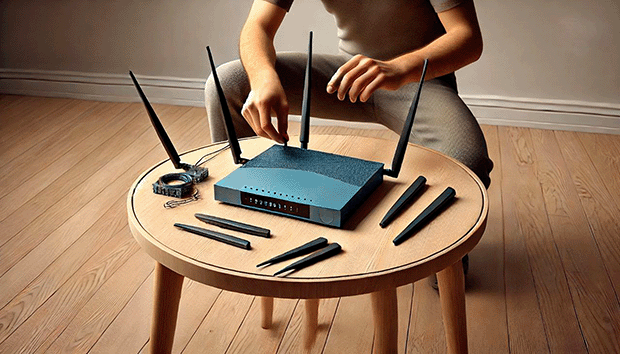
NetSpot’s Planning mode offers a unique advantage here by allowing you to virtually test the impact of different antenna types before making any changes.
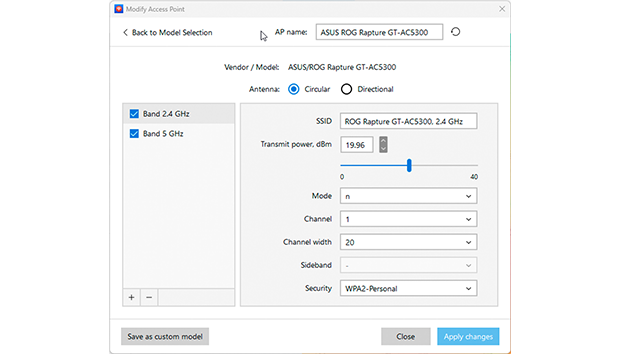
With this mode, you can simulate scenarios using circular antennas, which broadcast signals in all directions, or directional antennas, which focus the signal in a specific area.
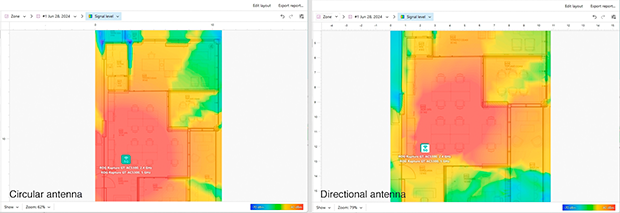
This helps you determine which type will work best for your space, whether you’re aiming to cover a large area evenly or target a specific zone with stronger coverage. Using this feature allows you to make informed decisions about antenna upgrades and achieve the best possible Wi-Fi performance for your environment.
7.Upgrade Your Equipment
Outdated hardware can bottleneck your Wi-Fi performance, limiting speed, range, and the ability to handle multiple devices efficiently. Switching to a router that supports cutting-edge standards, such as Wi-Fi 6 or Wi-Fi 6E, can dramatically enhance your network. These standards offer faster speeds, better device management, and reduced interference. For larger spaces, consider adding signal boosters or investing in a mesh Wi-Fi system to ensure comprehensive coverage.
If you’re unsure which equipment to choose, NetSpot’s Planning mode is an invaluable tool.
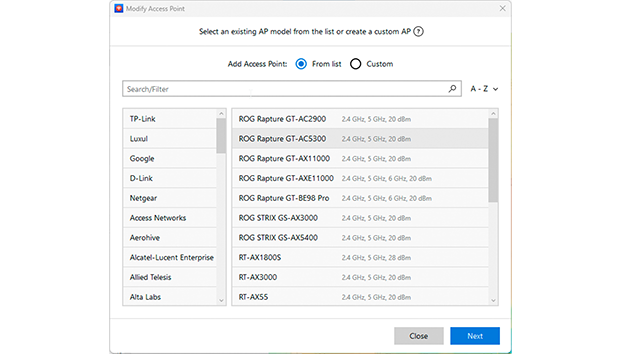
It allows you to virtually test different types of equipment and placement scenarios, factoring in your space’s unique obstacles and requirements. This feature is especially helpful if you haven’t yet decided on the specific hardware to purchase.
By simulating the performance of different devices, Planning mode helps you select the most suitable option, ensuring you get the best value for your money while avoiding unnecessary expenses.
8. Monitor Network Traffic
Monitoring your network traffic is essential for maintaining a reliable and efficient Wi-Fi connection. Overloaded networks or unexpected interference can lead to reduced speeds and interruptions, especially in homes or offices with multiple devices. Spotting and resolving these issues is essential to improving performance.
NetSpot’s Inspector mode offers accurate, real-time data on your Wi-Fi environment. It displays a list of connected devices, their signal strength, and the channels they use, helping you pinpoint bandwidth-intensive devices or sources of interference.
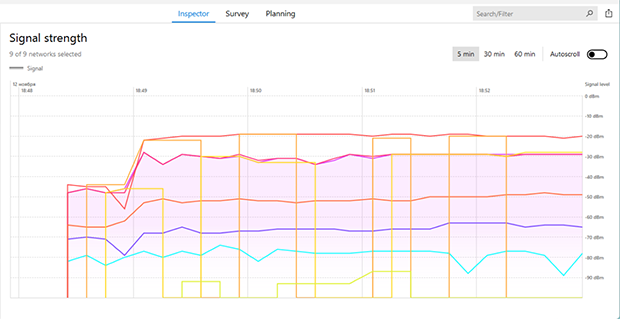
By analyzing this data, you can identify which devices or applications consume excessive bandwidth and take steps to manage them, such as limiting their access or adjusting usage priorities.
9. Use Quality of Service (QoS) Settings
Many modern routers come with Quality of Service (QoS) features that let you prioritize specific types of network traffic. For example, you can prioritize video calls or online gaming to maintain a smoother experience, even when your network is under heavy load.
By accessing your router’s admin interface, you can configure QoS rules to allocate bandwidth more effectively. This feature is particularly useful in households or offices with multiple users, ensuring critical tasks aren’t interrupted by background downloads or streaming on other devices.
10. Maintain Your Network
Regular maintenance is vital to keeping your Wi-Fi network reliable and efficient. Start by monitoring your network’s performance through regular speed tests. For example, the NetSpot Android app offers a quick and easy way to measure download speeds, helping you identify issues that need attention.
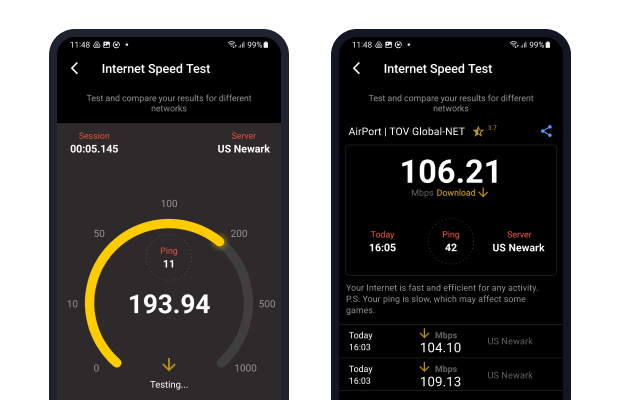
Security should also be a top priority. Regularly inspect your network for unauthorized devices and ensure your encryption protocols are up to date.
Analyze your network’s traffic patterns to identify bandwidth bottlenecks or performance issues. By understanding how different devices and applications affect your connection, you can make informed decisions about equipment upgrades or settings adjustments.
Finally, assess your Wi-Fi coverage periodically by mapping out weak spots or dead zones. This helps determine whether adjustments in placement or additional hardware like range extenders or mesh systems are necessary. With consistent evaluations and a proactive approach, you can ensure seamless connectivity that meets your evolving needs.

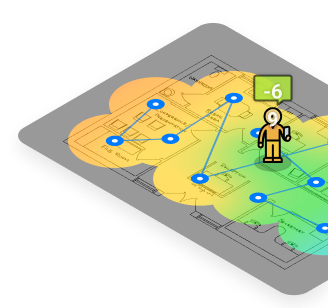
Conclusion
By implementing these tips and using powerful troubleshooting tools like NetSpot, you can significantly boost your Wi-Fi signal and overall network performance. Whether it’s optimizing your router’s placement, securing your network, or upgrading outdated hardware, a little effort can make a big difference in transforming your internet experience. With regular monitoring and proactive adjustments, your network will stay reliable and ready to meet your evolving connectivity needs.
